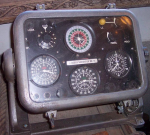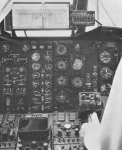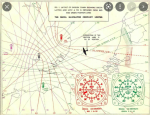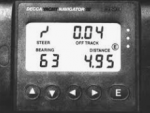Slowboat35
Well-Known Member
AP, I think the system you were referring to was Omega, another hyperbolic system based on VLF and theoretically at least giving global coverage from only 3 or 4 base stations. It was relatively short-lived and went out with all the rest as GPS came took over in the early '90s.
Back in the '80s one of our S61s had a compact magic box that allowed you to push buttons to enter lat and longs and go from one place to another without needing beacons to follow - truly astonishing compared to the nightmare of Decca . That used a combination of Loran (accurate but local)and Omega (less accurate and near global). On the N Sea it achieved astonishing feats of accuracy, 100m or so and was alleged to never be less than 2 or 3 miles anywhere on earth which tallies with your description. Though both systems had been mentioned in basic Nav training that was the only time I ever came across either of them. You could go from one rig to another hundreds of miles apart out of range of any beacons -a nerve-wracking business otherwise using dead-reckoning and hoping your target showed up on radar, or having to identify it amongst a number of others in the vicinity.
It is worth pointing out that as well as wartime "Gee" which became Decca , Consol was a Nazi bombing system originally called Sonne (Sun). That too lasted until recent years. Intruguing that two wartime firsts continued so long. Read Dr RV Jones' magnificent book Most Secret War to get the whole story.
But back to the OP, I now recall in the mid '80s there was a widely marketed Decca set that held maybe six or eight waypoints (Wow!!) and interfaced in lat and long - it was even pretty much automatic in terms of user-intervention. They were only a few hundred pounds and were briefly popular before the first GPS saw them off forever in 1990 or so. Thus there was an affordable lat-long interface but of course it required Decca signals to make it work.
But now we understand the reason for the question the solution is as simple as I suggested. You only need the relevant Decca chart which will be readily avialable on Ebay for a modest sum and simply read off the lat and long of the Decca co-ordinates. Nothing could be easier (well, apart from plotting the Decca position!). It's well explained on t'internet, just get the relevant chart first.
The instruments in a marine set. A cupboard full of electrickery elsewhere.

The similar kit in an S61 with a moving 'map'. To achieve a straight trackline on the yards long roller map (one roll per track) terrain was shown on a distorted hyperbolic projection(?) which made reference to terrain all but impossible.
This could be used to fly instrument approaches to 350ft! Something of a black art imho.

A very basic explanation using 2 channels (I've even forgotten the terminology).

Last gasp, late 1980s. Self contained and the size of a paperback.
This one used a lat and long interface and could be comprehended and used by normal humans.

Back in the '80s one of our S61s had a compact magic box that allowed you to push buttons to enter lat and longs and go from one place to another without needing beacons to follow - truly astonishing compared to the nightmare of Decca . That used a combination of Loran (accurate but local)and Omega (less accurate and near global). On the N Sea it achieved astonishing feats of accuracy, 100m or so and was alleged to never be less than 2 or 3 miles anywhere on earth which tallies with your description. Though both systems had been mentioned in basic Nav training that was the only time I ever came across either of them. You could go from one rig to another hundreds of miles apart out of range of any beacons -a nerve-wracking business otherwise using dead-reckoning and hoping your target showed up on radar, or having to identify it amongst a number of others in the vicinity.
It is worth pointing out that as well as wartime "Gee" which became Decca , Consol was a Nazi bombing system originally called Sonne (Sun). That too lasted until recent years. Intruguing that two wartime firsts continued so long. Read Dr RV Jones' magnificent book Most Secret War to get the whole story.
But back to the OP, I now recall in the mid '80s there was a widely marketed Decca set that held maybe six or eight waypoints (Wow!!) and interfaced in lat and long - it was even pretty much automatic in terms of user-intervention. They were only a few hundred pounds and were briefly popular before the first GPS saw them off forever in 1990 or so. Thus there was an affordable lat-long interface but of course it required Decca signals to make it work.
But now we understand the reason for the question the solution is as simple as I suggested. You only need the relevant Decca chart which will be readily avialable on Ebay for a modest sum and simply read off the lat and long of the Decca co-ordinates. Nothing could be easier (well, apart from plotting the Decca position!). It's well explained on t'internet, just get the relevant chart first.
The instruments in a marine set. A cupboard full of electrickery elsewhere.

The similar kit in an S61 with a moving 'map'. To achieve a straight trackline on the yards long roller map (one roll per track) terrain was shown on a distorted hyperbolic projection(?) which made reference to terrain all but impossible.
This could be used to fly instrument approaches to 350ft! Something of a black art imho.

A very basic explanation using 2 channels (I've even forgotten the terminology).

Last gasp, late 1980s. Self contained and the size of a paperback.
This one used a lat and long interface and could be comprehended and used by normal humans.

Last edited:
